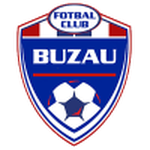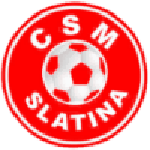| Coach | NA |
| Venue | Stadionul Clinceni |
Unirea Constanța predictions
Predictions for Unirea Constanța: See upcoming and historic predictions for Unirea Constanța below.
Disclaimer: Past performance does not guarantee future results. Betting involves risk; only wager what you can afford to lose. Always gamble responsibly.
Unirea Constanța latest results
| 06/05 | 0 - 1 |
Liga II standings
| Rank | Team | MP | W | D | L | GF | GA | GD | Pts |
|---|---|---|---|---|---|---|---|---|---|
| 1 |
 Viitorul Şelimbăr
Viitorul Şelimbăr
|
16 | 10 | 5 | 1 | 20 | 8 | 12 | 35 |
| 1 |
 Ceahlăul Piatra Neamţ
Ceahlăul Piatra Neamţ
|
2 | 0 | 0 | 2 | 2 | 6 | -4 | 31 |
| 2 |
 Corvinul Hunedoara
Corvinul Hunedoara
|
16 | 10 | 4 | 2 | 26 | 11 | 15 | 34 |
| 2 |
 Metaloglobus
Metaloglobus
|
2 | 1 | 1 | 0 | 2 | 1 | 1 | 30 |
| 3 |
 CSM Reşiţa
CSM Reşiţa
|
2 | 0 | 1 | 1 | 1 | 2 | -1 | 28 |
| 3 |
 Unirea Slobozia
Unirea Slobozia
|
16 | 10 | 4 | 2 | 17 | 6 | 11 | 34 |
| 4 |
 Arges Pitesti
Arges Pitesti
|
1 | 1 | 0 | 0 | 4 | 1 | 3 | 27 |
| 4 |
 CS Mioveni
CS Mioveni
|
16 | 8 | 5 | 3 | 18 | 8 | 10 | 29 |
| 5 |
 SCM Gloria Buzău
SCM Gloria Buzău
|
16 | 8 | 4 | 4 | 24 | 18 | 6 | 28 |
| 5 |
 Dumbrăviţa
Dumbrăviţa
|
2 | 1 | 0 | 1 | 2 | 3 | -1 | 26 |
| 6 |
 Unirea Dej
Unirea Dej
|
1 | 0 | 1 | 0 | 1 | 1 | 0 | 14 |
| 7 |
 Alexandria
Alexandria
|
2 | 1 | 1 | 0 | 3 | 1 | 2 | 13 |
| 7 |
 ACS Sirineasa
ACS Sirineasa
|
16 | 5 | 8 | 3 | 15 | 16 | -1 | 23 |
| 9 |
 CSA Steaua Bucureşti
CSA Steaua Bucureşti
|
16 | 5 | 7 | 4 | 30 | 21 | 9 | 22 |
| 10 |
 Concordia
Concordia
|
16 | 5 | 7 | 4 | 22 | 14 | 8 | 22 |
| 11 |
 Csikszereda
Csikszereda
|
15 | 6 | 4 | 5 | 13 | 12 | 1 | 22 |
| 12 |
 Chindia Targoviste
Chindia Targoviste
|
16 | 5 | 7 | 4 | 20 | 11 | 9 | 22 |
| 13 |
 Slatina
Slatina
|
16 | 5 | 5 | 6 | 14 | 17 | -3 | 20 |
| 18 |
 Tunari
Tunari
|
16 | 2 | 6 | 8 | 14 | 30 | -16 | 12 |
| 20 |
 Progresul Spartac
Progresul Spartac
|
16 | 0 | 1 | 15 | 9 | 43 | -34 | 1 |
About Unirea Constanța
Unirea Constanța is a Romanian football club based in Constanța, a city known for its vibrant sports culture. The club, though not as globally recognized as some of its counterparts, has a rich history and a dedicated fan base that has stood by it through thick and thin.
Founded in 1960, Unirea Constanța has spent most of its existence in the lower tiers of Romanian football. Despite this, the club has always been a breeding ground for talented players who have gone on to make a name for themselves in the Romanian football scene and beyond. The club's focus on nurturing young talent is one of its defining characteristics and a source of pride for its supporters.
Unirea Constanța's journey through the Romanian football leagues has been a rollercoaster ride, with the club experiencing both highs and lows. The team has seen periods of success, particularly in the 1980s and early 1990s, when it competed in the second tier of Romanian football, the Liga II. However, it has also faced challenges, including financial difficulties, which led to its temporary dissolution in 2010.
Despite these setbacks, Unirea Constanța has always shown resilience. The club was reestablished in 2014 and has since been working its way back up the Romanian football hierarchy. The team's determination to overcome adversity and its commitment to its community have only strengthened the bond between the club and its fans.
Unirea Constanța's home ground is the Stadionul Farul, a venue that has witnessed many memorable moments in the club's history. The stadium, with its intimate atmosphere, is a testament to the club's humble beginnings and its ongoing journey in the world of football.
The club's colors are blue and white, symbolizing the sea and the waves, a nod to the city's coastal location. The team's logo, a seagull in flight, is also a tribute to Constanța's maritime heritage. The club's nickname, "The Seagulls," is a term of endearment used by fans and reflects the team's deep-rooted connection to its hometown.
While Unirea Constanța may not have the same resources or prestige as some of the bigger clubs in Romania, it has something that money can't buy: a strong sense of identity and a passionate community of supporters. The club's story is one of perseverance, resilience, and an unwavering love for the beautiful game. Unirea Constanța is more than just a football club; it is a symbol of the city it represents and a source of local pride.
In conclusion, Unirea Constanța is a testament to the spirit of football in Romania. Despite the challenges it has faced, the club continues to inspire its fans and contribute to the rich tapestry of Romanian football. Its story serves as a reminder that in football, as in life, it's not just about the destination, but also about the journey.
















